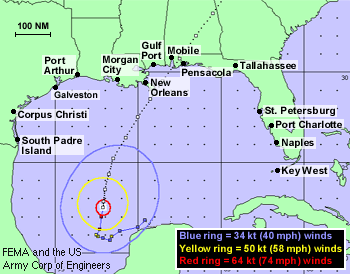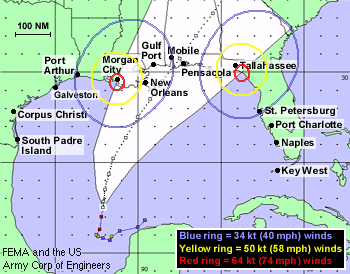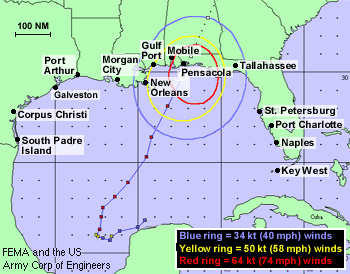| The figure to the right shows the forecast track for a hurricane 48 hours from landfall. What area encompasses
all of the locations that should be making preparations for the storm? 1. Pensacola to Morgan City 2. Corpus Christi to Key West 3. Morgan City to Tallahassee 4. Port Arthur to St. Petersburg |
|
| The correct answer is the entire coast from Port Arthur to St. Petersburg because you have to take into account both the forecast error AND the size of the wind field. |
|
This figure is output from the HURREVAC (Hurricane Evacuation) model, which displays a cone depicting the average track error. Inside this cone, every location is equally likely to have the hurricane hit by the end of the forecast period. In practice, forecasters (and the HURREVAC software) usually increase the error band slightly on the right side because hurricanes are tend to be stronger there. |
|
|
|
|



